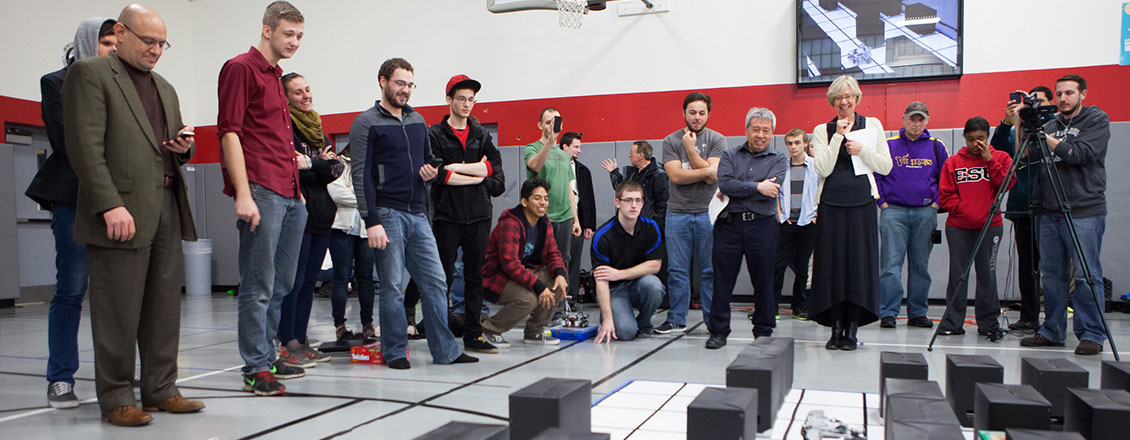
Facilities
Standard classrooms used in the Science and Technology Center include 2 rooms for large classes [40-50 workstations] and 5 for smaller classes [20-30 workstations]. In addition there are classrooms in Stroud Hall sometimes used for computing courses.
The current personal computer specifications and software image that are supported by Academic Computing are posted below.
Computer Labs available for research purposes in the Science and Technology Center include a NASA research and project lab, and a lab for our parallel processor, and a Computer Security research lab.
On Campus there are 15 other medium to large computer labs [20-40 workstations] not in the Science and Technology Center, but on campus, and 7 smaller labs [12 workstations] in the residence halls.
Computer Security Lab - Located in the Science and Technology Center the Computer Security lab is full of workstations on an isolated network. The isolated network is used so that students can understand security, including the context of networking, and network security. Student may share a workstation on the network, and in classes begin to understand how to defend against computer attacks and other security problems, fortify firewalls and related software and network hardware to mitigate and manage network and computer threats.
Operating Systems and networks - The Science and Technology Center also holds the Linux Systems Lab. It has a similar setup as the Computer Security Lab: a second isolated network which is used for operating system and networking classes, where tight controls over network design are an impediment to the learning process
Robotics work is supported with Legos Mindstorm Robotics kits, I-Robot create kits, and Lynx Motion Robotic arm & Bh3-R controller kits. In addition we have a new MobileRobots model P3-DX for research and student use.
Linux Parallel Processor - This system consists of 32 nodes and is monitored and programmed by 3 workstations and 1 server.
Microsoft workstation standard image includes: Active Perl, MSDN, Visual Studio, NetBeans, IDE, Bluej [java], Microsoft SQL server, PLT Scheme, Eclipse, Microsoft XNA game, Studio Python, Ruby, Visual Prolog, Windows PowerShell, InStat, MatLab, Minitab, StatMate, ArcGIS, EcoLab, Vanier Software, Business Explorer, Epi, Info, Accelrys, Discovery Studio, ForeCastX, jZip, MSOffice, FitnessGram, MiKTeX, KeyCreator, Picasa, RefWorks, RealPlayer, QuickTime, WinEdit, Mathematica, SAS, SPSS
At the same time Linux images are installed and used in a number of classes.
Contact Us
Contact Information
- Campus Address
- Science & Technology Center 318
- Phone:
- (570) 422-3666
- Fax:
- (570) 422-3490 (Fax)
- Title of Department Leader
- Department Chair Computer Science
- Name
- Christine Hofmeister
- E:
- chofmeister@esu.edu
- Phone:
- (570)422-3327



